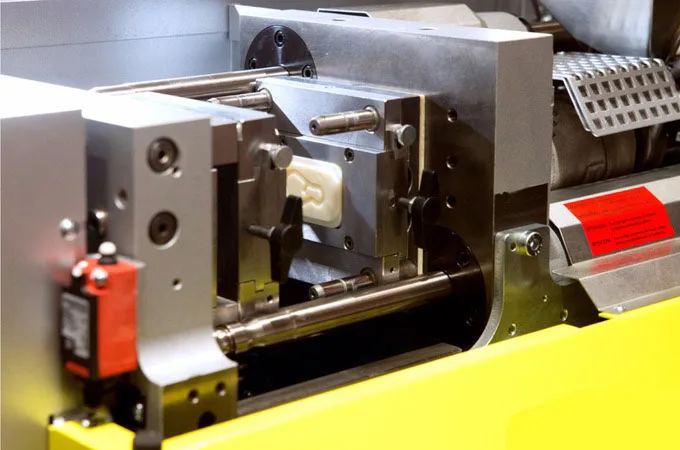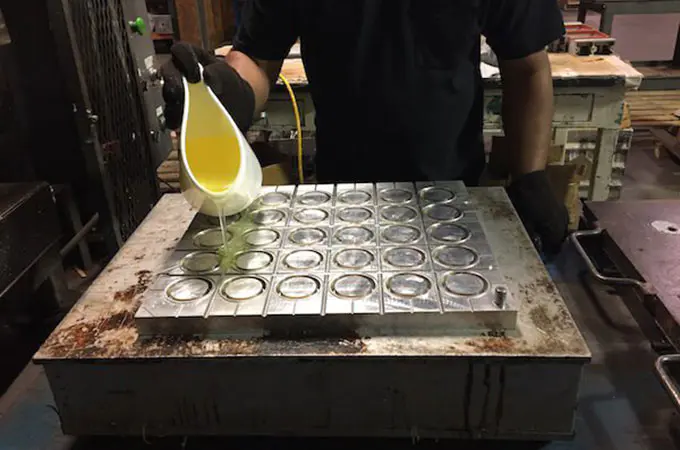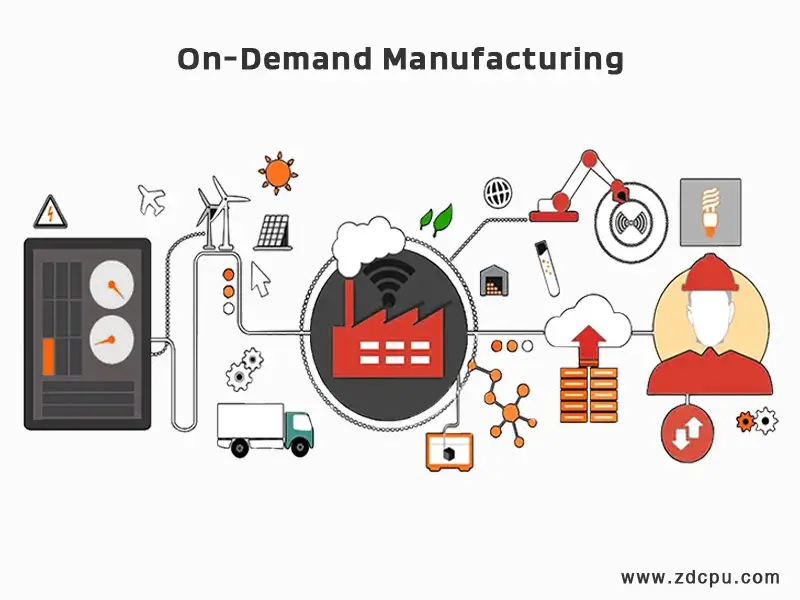In the ever-evolving landscape of modern industry, the concept of on-demand manufacturing has emerged as a true game-changer. At its core, on-demand manufacturing is a dynamic approach that has revolutionized the way products are made and delivered. In this post, we will delve into this innovative process and explore its importance and benefits in today’s fast-paced industries.
What is On-Demand Manufacturing?
Before we learn on-demand manufacturing, we should know what is traditional manufacturing. Traditional Manufacturing refers to the conventional method of producing goods, typically in large quantities, before there is a confirmed demand. It often involves standardized processes, long lead times, and extensive investments in machinery and tooling. Traditional manufacturing aims to create economies of scale and may result in the stockpiling of inventory.
On-demand manufacturing is a contemporary approach to production that focuses on creating goods in response to specific orders or immediate demand, as opposed to producing items in large quantities for future stockpiling. This manufacturing model prioritizes agility, customization, and efficiency, offering a stark departure from traditional mass production methods.
At its core, on-demand manufacturing can be defined as a production strategy that manufactures products only when there is a confirmed order or demand for those products. This means that goods are created precisely as needed, in the required quantity, and often with a high degree of customization to meet specific customer preferences.
The concept of on-demand manufacturing has been evolving over the last few decades, but it gained significant momentum in the 21st century. The early 2000s saw the advent of 3D printing technology, which played a pivotal role in enabling rapid, on-demand production of complex parts and products. This technology, along with advancements in digital manufacturing, laid the foundation for modern on-demand manufacturing practices.
Factors Leading to the Emergence of On-Demand Manufacturing
What led to the emergence of on-demand manufacturing services? Several factors led to the evolution of traditional manufacturing into manufacturing on demand. These factors include:
Advanced in Available Technologies:
On-demand manufacturing relies heavily on advanced technologies such as 3D printing, CNC machining, and digital manufacturing. These technologies enable rapid prototyping and production of small quantities without the need for costly tooling setups.
Growing Customer Demands:
Customer demands for personalized, tailored products are on the rise. On-demand manufacturing allows businesses to meet these demands by offering customization options, leading to higher customer satisfaction and loyalty.
E-commerce and Online Platforms:
The rise of e-commerce and online platforms has facilitated the growth of on-demand manufacturing by providing easy access to customers and allowing for seamless order placement and tracking.
Supply Chain Integration:
On-demand manufacturing often involves a close integration of the production process with the supply chain. This integration ensures that materials and components are readily available when needed, further reducing lead times.
Cost Control Requirement:
The need for cost control is a significant driver of on-demand manufacturing. By producing items as needed, businesses can better manage their production costs, avoiding excess inventory expenses and optimizing resource allocation.
Advantages of On-Demand Manufacturing Over Traditional Manufacturing
Reduced Inventory Costs:
On-demand manufacturing significantly reduces the need for maintaining large inventories of finished goods. Traditional manufacturing often involves producing items in bulk and storing them in warehouses, incurring storage costs and the risk of excess, unsold inventory. With on-demand manufacturing, products are made as they are needed, minimizing storage expenses and the financial burden of excess stock.
Faster Turnaround Times:
Traditional manufacturing processes can be time-consuming, especially when setting up production lines and molds for large quantities. On-demand manufacturing, on the other hand, is known for its rapid response. Products can be produced and delivered more quickly since there’s no need to wait for long production runs or extensive lead times.
Enhanced Customization and Flexibility:
On-demand manufacturing offers a high degree of product customization and flexibility. Each item can be tailored to meet specific customer requirements, from design modifications to material choices and finishes. This flexibility allows businesses to cater to diverse customer preferences, increasing customer satisfaction.
Low-Volume Manufacturing:
Unlike traditional manufacturing, which often imposes minimum order quantities, on-demand manufacturing typically has no minimum order requirements. So, it is well-suited for low-volume production runs. This is particularly beneficial for businesses that produce specialized products, prototypes, or limited-edition items. It eliminates the cost and waste associated with producing large quantities when only a small volume is required.
Rapid Prototyping:
On-demand manufacturing is ideal for rapid prototyping and iterative product development. Businesses can quickly create prototypes, test new designs, and make improvements without the need for costly tooling changes. This accelerates the product development cycle, saving both time and money.
The Ultimate Guide to Rapid Manufacturing for Product Development
Limitation of On-Demand Manufacturing Over Traditional Manufacturing
Higher Per-Unit Costs:
On-demand manufacturing can be less cost-effective per unit when compared to mass production. This is due to the economies of scale that traditional manufacturing achieves through large production runs.
Complex Supply Chain Management:
Coordinating just-in-time production can be challenging, requiring precise scheduling and coordination across the supply chain. Any disruptions can lead to delays.
Limited Materials and Process Options:
Not all materials or manufacturing processes are suitable for on-demand production, which may restrict the range of products that can be manufactured using this method.
Quality Control Challenges:
Maintaining consistent quality can be more challenging in on-demand manufacturing, especially when producing complex or highly customized items.
Key Differences Between On-Demand Manufacturing and Traditional Manufacturing
On-demand manufacturing and traditional manufacturing are often compared. Through the previous sections, we have understood the advantages and disadvantages of those two manufacturing methods. So, what are the key differences between the two manufacturing? We can have a glance at the comparison table of the two manufacturing methods.
| On-Demand Manufacturing | Traditional Manufacturing | |
|---|---|---|
| Production Approach | Responds to Specific Orders | Mass Production in Advance |
| Inventory Management | Minimal Inventory | Large Inventories |
| Turnaround Time | Faster | Longer |
| Customization | High Degree of Customization | Limited Customization |
| Flexibility | Highly Flexible | Less Adaptable |
| Production Volume | Suited for Low Volumes | Designed for High Volumes |
| Prototyping | Ideal for Prototyping | Limited Prototyping |
| Minimum Order Requirements | Often None | Commonly Minimum Orders |
| Lead Times | Shortened | Lengthy |
| Cost Efficiency | Reduced Waste and Costs | Potential Overproduction |
| Environmental Impact | Reduced Waste and Energy | Potential Resource Overuse |
| Customer-Centric | Tailored to Customer Needs | Standardized Production |
| Pre-Unit Cost | Higher | Lower |
Main Processes Used in On-Demand Manufacturing
The manufacturing process used in on-demand projects is a greater focus on low volume and meeting consumer demand in the shortest turnaround time. Here are a few of the main processes that manufacturers rely on for on-demand production.

Injection Molding

Compression Molding

Cast Molding





